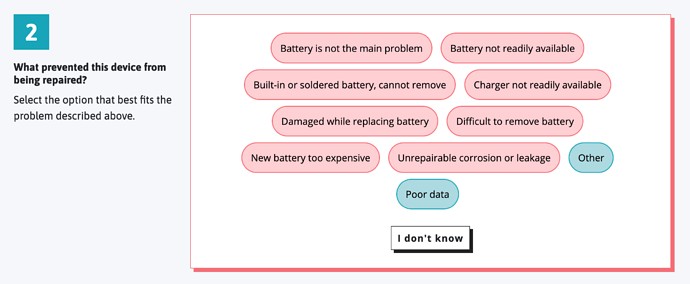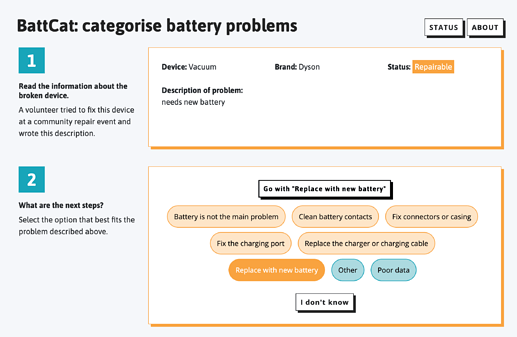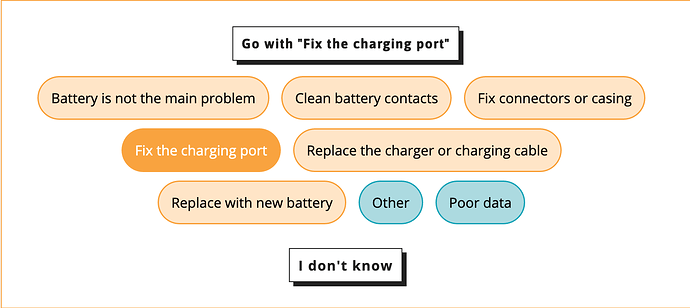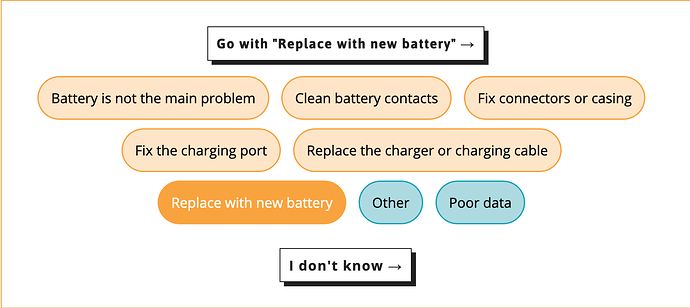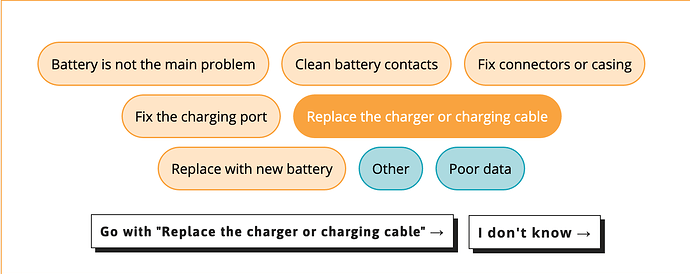We’ve probably all seen devices break because something went wrong with the battery. In fact, batteries are such a common problem that we’ve now got data on 1000 devices brought to repair events that stopped working because the battery failed and couldn’t be fixed at the time.
As it happens, the EU is currently working on new rules that could ensure that new products come with user-replaceable batteries, which would be fantastic for repair! So we want to use the data we’ve all collected to really push for this and to counter the bogus arguments from big tech lobbyists (more on this below).
But first, we need your help to learn more: what exactly went wrong with all these batteries?
Introducing BattCat
BattCat is our latest people-powered investigation into why devices break. This time, we’re looking into how batteries cause devices to fail.
Like our previous quest, TabiCat, we’re using data from our own Fixometer combined with data from our partners in the Open Repair Alliance. Together, we’ve collected information on 1000 broken devices that couldn’t be fixed at repair events (not including the 971 devices that were fixed successfully ![]() ). We need your help to categorise what went wrong with each of them.
). We need your help to categorise what went wrong with each of them.
BattCat: auf Deutsch | en español | en français | in italiano | in het Nederlands
How does BattCat work?
-
Go to BattCat and choose your preferred language from the menu at the bottom right. You will see some information about a device that was brought to a real-life repair event, that couldn’t be fixed on the day. If it’s in a different language, click the translate button to read it in your preferred language.
-
Select the type of problem that best describes the problem or what needs to happen next to fix that device. Once you’ve pressed an option, confirm your choice by pressing the “Go with…” button that appears at the top of the list. If the data provided is too poor quality to make a judgement, select the ‘Poor data’ button. And if you’re not sure, just select ‘I don’t know’ at the bottom.
That’s it!
Once you’ve confirmed an option, you’ll see another device. The more faults you can categorise, the more we learn! And don’t worry if you’re not 100% sure about your answer: BattCat shows each device to two or three people to help confirm the right category.
If you try a few devices, you’ll probably notice that the options you can choose change sometimes. This is because some devices were marked as ‘end of life’ (i.e. unrepairable) and others were marked as ‘repairable’.
- If the device you see was ‘end of life’, you will see red buttons containing possible reasons that device couldn’t be fixed. This looks like the screenshots above.
- If the device you see was ‘repairable’, you will see orange buttons containing possible next steps to fixing the device. This looks like the screenshot below:
BattCat: auf Deutsch | en español | en français | in italiano | in het Nederlands
Why batteries, and why now?
The European Commission is currently investigating new legislation aiming to improve the environmental performance of batteries and products containing batteries. One aspect being considered is a removability and replaceability clause: ensuring that all products come with a removable and user-replaceable battery.
We think this is important from the perspective of repairing products.
Very little data exists about repairs of small electrical and electronic products made difficult or impossible by problems related to their batteries. In some cases difficult to remove batteries might mean products become waste simply because the battery health is reduced.
So what can we do?
We want to use the results of BattCat to give further evidence in support of the push for user-replaceable batteries in all future products ![]()
This is why we need your help now!
Once you’ve helped with BattCat and if you’re curious about more of our work in this area, you can still help us complete our work on printers with PrintCat
and tablets with TabiCat
Questions? Comments? Feedback?
Just post below and let’s chat ![]()
We are hugely grateful to to The ACTION (Participatory science toolkit against pollution) project for funding this work and for their support.
This project has received funding from the European Union’s Horizon 2020 research and innovation programme under grant agreement No 824603. This post reflects the author’s views. The European Commission is not liable for any use that may be made of the information contained therein.

